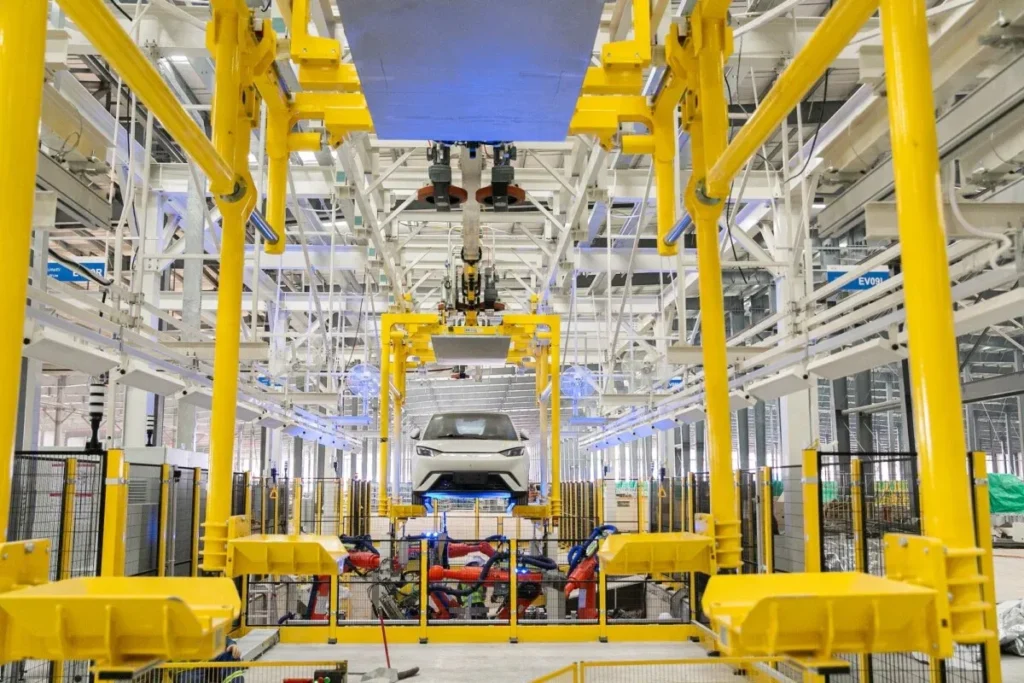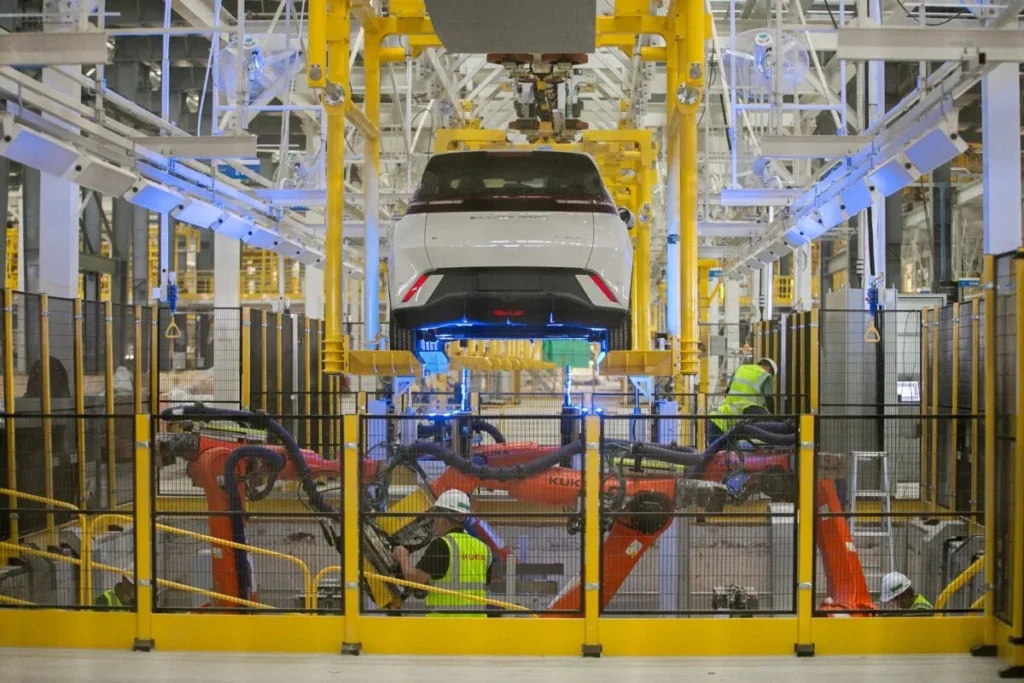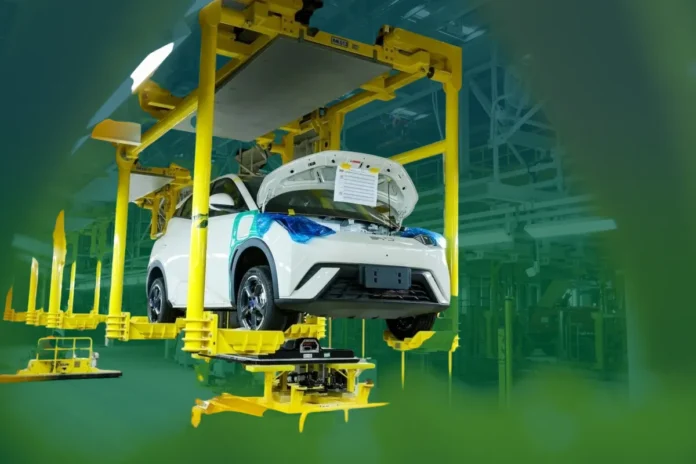BYD Brazil Factory, a global leader in electric vehicles, has taken a significant step in its global expansion by opening its first factory outside of Asia in Camaçari, Brazil. This move signals a new chapter for the electric vehicle market in Latin America, promising substantial investment and the generation of thousands of jobs.
Table of Contents
In Camaçari, Brazil, on the very grounds where an American automotive giant once symbolized industrial might, a new era is dawning. Chinese electric vehicle leader BYD is undertaking a historic expansion, establishing its first passenger car factory outside of Asia—a bold, multi-billion dollar bet on the future of sustainable transport in Latin America. This move represents a seismic shift in the global automotive power dynamic, but the road ahead is complex. This article provides a comprehensive analysis of this landmark venture. We will delve into the monumental investment breathing new life into a former Ford plant, explore the ambitious production capabilities designed to serve the continent, and examine the significant labor and tax hurdles that challenge the project. Finally, we analyze the broader impact on Brazil’s economy and its competitive EV market, charting the course of this transformative industrial endeavor.
A Landmark Investment in Latin America’s Automotive Future
BYD’s entry into BYD Brazil Factoryis marked by a staggering investment that underscores its long-term commitment to the region. The Chinese electric vehicle giant has pledged a total of 5.5 billion reais (approximately $1 billion USD) to establish its first passenger car plant outside of Asia in Camaçari, a city in the northeastern state of Bahia. This move is not just a financial headline; it’s a symbolic power shift in the automotive world. The new manufacturing hub is being built on the site of a former Ford factory, which ceased operations in 2021, representing a tangible transition from legacy internal combustion engine manufacturing to the new era of electric mobility. The closure of the Ford plant resulted in the loss of thousands of jobs, and BYD’s arrival brings the promise of economic revitalization to the area.
The ambitious project is a multi-faceted industrial complex composed of three distinct production facilities. One plant will be dedicated to the production of hybrid and electric cars, the core of BYD’s consumer-facing expansion. A second facility will focus on manufacturing chassis for electric buses and trucks, leveraging BYD’s established expertise in the commercial vehicle sector. Critically, a third unit will be dedicated to processing lithium and iron phosphate, essential materials for batteries. This vertical integration strategy, which includes securing mineral rights in Brazil’s “Lithium Valley,” is designed to create a more efficient and cost-effective supply chain, positioning the Camaçari complex as a strategic hub for innovation and production for the entire Latin American market.

Production Powerhouse: What to Expect from the BYD Brazil Factory
The Camaçari complex is engineered to be a formidable force in the Latin American automotive market right from the start. In its first phase, the factory is slated to have an impressive annual production capacity of 150,000 vehicles. Looking ahead, BYD has ambitious plans to potentially double this output to 300,000 units in a second phase, signaling its long-term vision for Brazil as a central production hub. This expansion will not only serve the vast Brazilian market but is also strategically positioned to export electric vehicles throughout Latin America.
Initially, production will commence by assembling semi-knock-down (SKD) kits. This process involves major components—like the body, motor, and battery—being shipped from China for final assembly in Brazil. However, this is just the first step. BYD Brazil Factory has stated a clear goal of progressively increasing the localization of parts and production, with plans to incorporate local stamping, welding, and painting. The company is already establishing partnerships with local suppliers, such as a deal with Continental for Brazilian-made tires, to build a robust domestic supply chain.
The first models to roll off the new assembly line will include a mix of all-electric and plug-in hybrid vehicles tailored for the Brazilian market. The lineup features the popular Dolphin Mini (known as the Seagull in China), the Song Pro SUV, and the King sedan (also called the Chaser 05). This diverse initial offering is designed to cater to various consumer segments and accelerate the adoption of new energy vehicles in the country.
Navigating the Challenges: Labor and Tariffs
Despite the ambitious investment and production goals, BYD’s journey in Brazil has not been without significant obstacles. The project has faced serious scrutiny over its labor practices. In May 2025, Brazilian labor prosecutors filed a lawsuit against BYD Brazil Factory and two of its contractors, alleging human trafficking and “slavery-like conditions” for Chinese workers at the Camaçari construction site. The investigation, which led to the “rescue” of 220 workers in late 2024, described extremely degrading living and working situations, including overcrowded dormitories, insufficient sanitation, and the illegal withholding of passports and wages. While BYD has stated it is cooperating with the investigation and has a “non-negotiable commitment to human and labor rights,” the allegations have cast a shadow over the project and contributed to timeline adjustments.
Beyond labor issues, BYD must navigate Brazil’s notoriously complex and protectionist economic environment. To stimulate local production, the Brazilian government is progressively reintroducing import tariffs on electric and hybrid vehicles, which were previously exempt. These taxes began at 10-12% in January 2024 and are set to climb to 35% by July 2026. This policy directly challenges BYD’s initial strategy of importing vehicles while its factory is under construction. The company has faced delays in clearing essential equipment from ports while awaiting decisions on tax exemptions and has lobbied for reduced tariffs on the semi-knock-down kits it plans to assemble initially. This places BYD Brazil Factory in a delicate position, balancing its need for favorable import conditions against the government’s goal of protecting established local manufacturers. These combined challenges have pushed the timeline, with the factory now expected to be fully operational by the end of 2026 rather than early 2025 as initially projected.

The Broader Impact on Brazil and the EV Market
The establishment of BYD’s Camaçari factory is poised to send significant ripples across Brazil’s economy and its automotive market. The most immediate and celebrated impact is job creation. BYD Brazil Factory has announced that the plant will generate approximately 10,000 direct and indirect jobs, providing a major economic boost to the state of Bahia, particularly after the job losses that followed Ford’s departure from the same site. This massive hiring initiative is a cornerstone of the project’s promise for regional revitalization.
Beyond direct employment, BYD’s presence is intended to be a catalyst for the entire electric vehicle ecosystem in Brazil. By producing cars locally and processing key battery materials like lithium and iron phosphate on-site, BYD Brazil Factory is laying the groundwork for a robust domestic supply chain. This strategy is expected to attract other parts and technology suppliers to the region, creating a specialized industrial hub for sustainable mobility. This aligns with the Brazilian government’s “Mover” program, which provides tax incentives to companies that invest in decarbonization and localize production.
However, BYD Brazil Factory enters a dynamic and complex market. Other major automakers, including Stellantis, Volkswagen, Toyota, and fellow Chinese manufacturer Great Wall Motors, have also announced substantial investments in Brazil, many focusing on hybrid technologies that leverage the country’s well-established ethanol industry. Brazil has a long history with flex-fuel vehicles, which can run on gasoline or ethanol, and these cars currently dominate the market. Therefore, BYD’s all-electric and plug-in hybrid models will not only compete with other legacy automakers but also with a deeply entrenched and more affordable biofuel alternative. Despite this, the rapid growth in EV sales, largely driven by Chinese brands, indicates a market ripe for transformation, positioning BYD’s factory as a key player in shaping Brazil’s automotive future.
Conclusion
BYD’s venture in Brazil is far more than just the construction of a new factory; it represents a defining moment in Latin America’s transition to electric mobility. The monumental investment and ambitious production targets signal a powerful commitment to transforming the region’s automotive landscape, promising economic revitalization and a new industrial focus. However, the path is fraught with significant challenges, from serious labor rights allegations to the complexities of Brazil’s tax policies, which have added layers of uncertainty. Ultimately, the success of the Camaçari plant will serve as a crucial barometer. It will not only determine BYD Brazil Factory’s future in the Americas but will also signal whether Brazil can successfully navigate the complexities of global trade and industrial policy to become a true leader in the sustainable transportation revolution.




